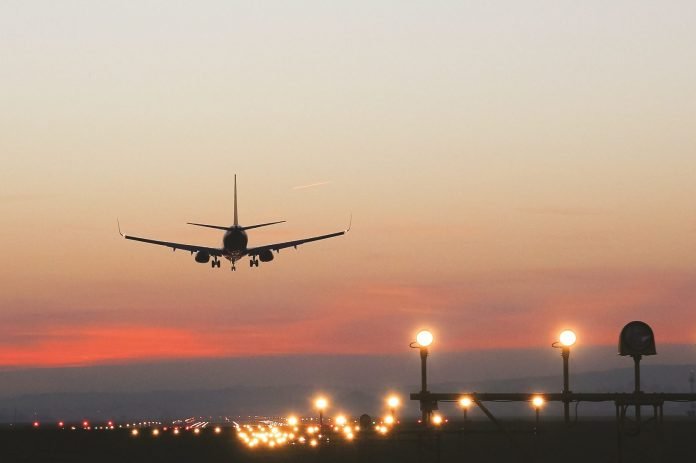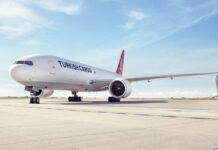
Air transport is widely recognized as a key contributor to economic development, and as such the success of the airfreight industry is directly correlated to the overall rising levels of prosperity for countries around the globe. The outlook for the global economy remains positive and, this bodes well for continued airfreight growth.
However, business as we know it is changing, and to keep up means the airfreight industry needs to keep pace with new technology and the changing demands of customers. The complexity and number of interactions in the business world is becoming ever more sophisticated and as such having a trade organization such as IATA can make a world of difference.
The International Air Transport Association (IATA) is the premier trade association for the airfreight industry and they support all types of aviation activity to help formulate policy on critical issues. IATA is uniquely positioned to help guide and advise the industry on key issues and for this reason is why we were privileged to speak with Mr. Glyn Hughes, Global Head of Cargo at IATA about what he foresees for the airfreight market moving forward.
The Digitalization Movement
A big contributor to the growth the industry has been experiencing undoubtedly comes from the booming e-commerce market. This new market brings with it an increased demand for transparency, predictability, and information as consumers want their goods quickly and want to know where their goods are located throughout the shipment process.
Mr. Hughes said, “I’ve been really encouraged by how much effort we’re seeing on a number of different areas related to transparency for e-commerce shipments. Shippers and carriers, exporters ground handlers are all working together to further improve on this already expanding segment of our industry.”
However, Mr. Hughes went onto explain how one of the biggest contributors to the advancement being seen throughout the industry is due in part to the move towards digitalization.
“Over the past year, we’ve really been trying to embrace digitalization,” said Mr. Hughes. “For instance, our ONE Record program looks to create an environment where people are able to share bits of information when it’s made available rather than waiting for a whole bunch of information, which is what we currently have with paper air waybills. It’s another step to driving paperless processes and creating a plug & play environment for companies, with the ultimate goal of creating an end-to-end digital logistics and transport supply chain.”
“To that end, a significant change we saw for the industry during the course of 2018 was the announcement of resolutions that change the way electronic air waybills are used. Moving to exclusively making use of them as the primary contract of carriage when the shipment is being presented to a carrier, with paper being the optional method. This is a big change whereas historically paper was the requirement and the electronic record was optional. So, it’s a complete shift there; we’re really trending towards a think digital first approach now.”
A Move Away from Paper
This mentality towards a move to ‘digital first’ was a process year’s in the making, but the industry may finally be over the hump as more and more people use technology in their everyday lives and expect the same type of convenience in their business dealings, leading to a push for more technology and innovation throughout the airfreight industry. It’s similar to a snowball rolling down a hill. At a certain point momentum takes over and we’re beginning to hit this type of stride in the airfreight industry. We’re experiencing less and less push-back as more people are beginning to embrace digitalization as the way forward.
One of the last holdouts are e-air waybills that the industry has been pushing for years now. For the passenger side of the business the switch off paper was quite easy. In the past, IATA would print hundreds of millions of paper passenger tickets every year and distribute them to ticket agents around the world. The decision to stop this process of distributing paper tickets was of course a shock, as ticket and travel agents were no longer the key holders for using air transportation, but with one flick of the switch, the move to online ticketing was relatively complete for passenger side. This would be a wonderful way to move the cargo side to e-air waybills, but as Mr. Hughes describes, it’s not that simple.
“In the cargo world, air waybills are sourced by every individual carrier and every individual forwarder themselves through numerous sources; simply put, there’s no one single way of switching off paper. Other significant differences are that the Warsaw Convention laid out the framework for paperless passenger tickets, for the cargo world the agreement still required a piece of paper as evidence for the transportation of cargo. This is why IATA has been working to get more countries to ratify the Montreal Convention 1999 (MC99) agreement, which many countries have yet to do. Even if every country ratifies this agreement, in the cargo world the cargo can’t move or talk; it’s not just going to get on a plane by itself. You’ve got to make sure that all the people handling the cargo throughout the supply chain has access to the information about the shipment.”
“The fact that there’s not one single trigger that makes a mandatory option possible means we’ve had to press for everyone to move to paperless for the right reasons as we approach it from a different angle. The number is steadily improving those as we are at about 900,000 shipments every month are moved without a paper airway bill, that is a significant step forward compared to where we were just 3 or 4 years ago when it was in the to 200,000 range. As we move forward, I fully expect this number to continue rising as we as an industry are truly starting to embrace what digitalization can bring to us.”
Expanding Programs
Going hand-in-hand with the push towards a more digitalized supply chain is IATA’s Center of Excellence for Independent Validators (CEIV) program. Working with industry stakeholders and regulators, IATA has already ushered in their CEIV Pharma certification that helps organizations and the entire supply chain to achieve what is needed for the safe and secure transportation of pharmaceutical products.
Mr. Hughes explained, “The pharmaceutical industry has been very stern with the air cargo industry over the last few years about the need for a higher quality supply chain. The industry responded with the CEIV program that confirms the excellence in the handling of pharmaceuticals. It’s been well taken up by the industry and we’ve now created communities that are connecting with each other to create certified trade lanes for pharmaceuticals around the world. The pharmaceutical companies are extremely appreciative of this as they are better assured that their high valuable and sensitive products are safe and secure throughout the entire supply chain.”
This same type of independent validation program is being applied to areas beyond just the pharmaceuticals industry as IATA is beginning to launch other CEIV initiatives with a focus on other sectors. Afterall, when it comes down to it CEIV is about fulfilling a few core tenants. It’s about the bringing together of industry standards which is published through IATA publications or other regulatory bodies to better meet the requirements of the shipper and users throughout the supply chain. CEIV brings all of these elements together to create an audit program based on a very sophisticated checklist. This allows independent validators to then come in and audit an entity, produce their findings and give them a certificate of approval if it meets all standards. So, as Mr. Hughes explains, it was not a giant leap to apply these same set of standards to other sectors around the airfreight industry.
He said, “There are a number of areas where the industry is seeing rapid expansion; live animals, perishables, valuables, and this extends to ground handlers as well when it comes to specialized handling. We’ve seen the success and impact CEIV has had for the pharmaceuticals market and we’ve decided to start implementing similar CEIV programs with a focus on other areas. We’ve just introduced a program for the live animal sector that is just beginning to take off. Of course, the checklist, the regulatory environment, the handling processes, and the user requirements are different, but the program principles are the same. You make an audit program based on those standards and send out independent validators.”
“Right now, we’re working on introducing a CEIV for the fresh sector. It’s still a bit in the early stages as we are now looking into industry standards and collecting regulatory requirements, so we can then cooperate and integrate all of these required standards and handling requirements into the program. This is still under development, but we’re very hopeful these initiatives will help us to generate higher quality supply chains throughout the industry.”
อัพเดตข่าวสารและบทความที่น่าสนใจในอุตสาหกรรมโลจิสติกส์ก่อนใคร ผ่าน Line Official Account @Airfreight Logistics เพียงเพิ่มเราเป็นเพื่อน @Airfreight Logistics หรือคลิกที่นี่












